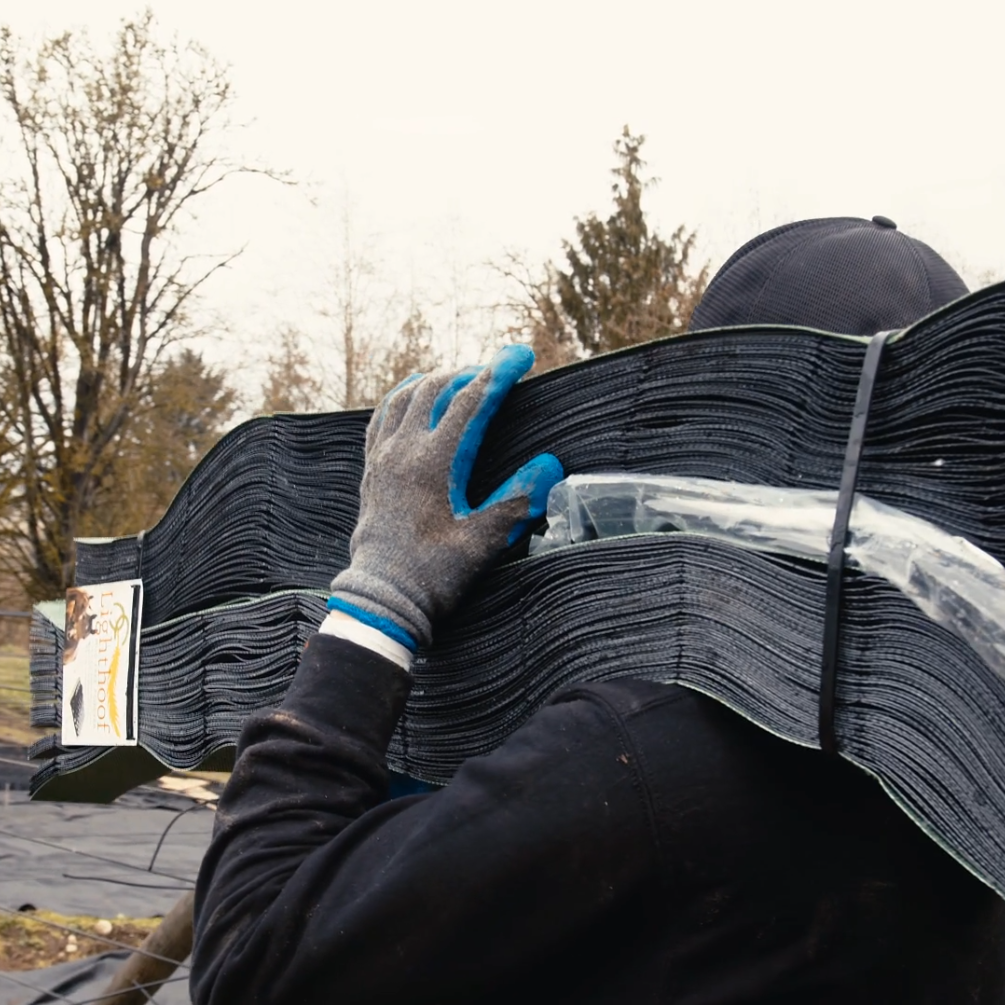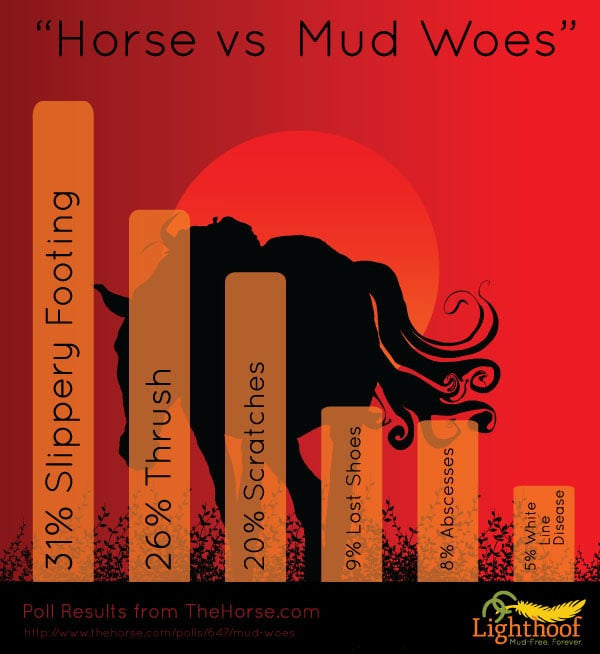Nobody likes mud in their horse paddocks, gate areas or walkways. Muddy Paddocks can be a problem for numerous reasons including safety, health, and aesthetics. Muddy paddocks can even affect how much a boarding or training facility can charge each month and how many clients or boarders it attracts and retains.
What People Worry Most about When It Comes to Muddy Paddocks
When we saw the results of this mud poll from TheHorse.com, we were surprised by some responses and all too familiar with others. The poll asked readers who’d suffered from mud issues in their paddocks or other horse areas to weigh in on their biggest “Horse vs. Mud Woes.”

The biggest concern, with 31% of the vote, was slippery footing.
We agree that this is a priority. Your horse’s outdoor area is meant to be a place for him to stretch his legs a bit. If he has slick or deep footing due to mud issues, he’s at severe risk for tendon injury or strains just moving around in it -- or worse, a catastrophic injury resulting from a fall.
26% of people had struggled with thrush, a hoof disease caused by bacteria and fungi in the mud. Another 20% felt their worst muddy paddock problem was scratches or mud fever, a skin disease that usually affects a horse’s lower legs. Check out our post on What Every Horse Owner Should Know About Mud Fever for more info on mud-related skin diseases.
Other health concerns people responded to were lost shoes, abscesses, and white line disease. There were also management issues brought up concerning muddy paddocks, such as:
- Inability to get into the paddocks with the wheelbarrow to muck
- Time spent cleaning horses off when they come back inside
- Killing of grass roots, which makes for bare pastures in the spring
Mud woes are so numerous and serious that it’s well worth the investment to create safe, mud-free areas that you can use year round. The good news is that’s not as hard or expensive as you may think.
Using Lighthoof to Permanently Fix Your Muddy Paddocks
If you’ve made a huge investment in gravel or hogsfuel in your paddocks only to see it disappear into the mud in just a few years, don’t worry: You’re not alone. New footing just doesn’t last without some kind of structural reinforcement for your paddock base.
 Footing gets lost because of the plunger effect of the horses’ hooves which, due to their high impact pressure, have the ability to churn gravel or bark deep into the muddy sub-base below.
Footing gets lost because of the plunger effect of the horses’ hooves which, due to their high impact pressure, have the ability to churn gravel or bark deep into the muddy sub-base below.
Another major reason for muddy paddocks is erosion from flowing water and hoof traffic that destroys the surface and opens it back up to deep mud. Once paddocks become muddy, it’s difficult to clean manure out of them, which quickly leads to more mud.
 Lighthoof mud management panels reinforce your paddock footing with fist-sized connected plastic cells that hold the gravel and protect it from erosion and plunging. It’s powerful enough to create a solid surface right over the top of deep mud and strong enough to support trucks and tractors.
Lighthoof mud management panels reinforce your paddock footing with fist-sized connected plastic cells that hold the gravel and protect it from erosion and plunging. It’s powerful enough to create a solid surface right over the top of deep mud and strong enough to support trucks and tractors.
 Lighthoof is made of large, flexible, plastic panels that conform easily to your terrain for easy installation. They don’t become brittle, poke up from the ground, or cut into your horse if they become exposed. Lighthoof panels sit right below the surface of your paddock. They give it the strength to prevent your horse from sinking in and creating more mud. Learn more about how Lighthoof works to solve muddy paddock problems.
Lighthoof is made of large, flexible, plastic panels that conform easily to your terrain for easy installation. They don’t become brittle, poke up from the ground, or cut into your horse if they become exposed. Lighthoof panels sit right below the surface of your paddock. They give it the strength to prevent your horse from sinking in and creating more mud. Learn more about how Lighthoof works to solve muddy paddock problems.
Is mud a concern for you and your horse? What are your biggest fears when it comes to mud? We'd love to hear from you! Leave your thoughts in the comments and let us know how your muddy paddocks measure up, or how you've managed to maintain a mud free environment for your horse.




Leave a comment
This site is protected by hCaptcha and the hCaptcha Privacy Policy and Terms of Service apply.